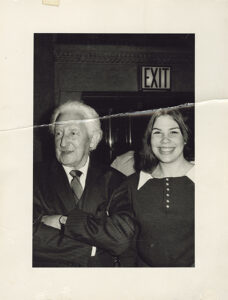Menu
BELLAK APPERCEPTION TEST
B.A.T.
- BAT- Black and white
- BAT -color
BAT – The Bellak Apperception Test consists of 5 cards with 5 different cultures and a 5 page Manual which includes one revised Haworth Schedule.
Administering time- 40 minutes. for subjects 14+
The BAT can be administered with the Thematic Apperception Test
Authors Dr. David Abrams and Kerin Bellak-Adams
THE CHILDREN'S APPERCEPTION TEST (C.A.T.-A)
This test employs an original projective technique for presenting children with situations of concern. It consists of ten pictures of animals in social context through which the child becomes involved in conflicts, identities, roles, family structures, etc. Also included: informational material on history, nature, purpose of C.A.T., Ego Function Graph, test interpretation, use of Short Form, research possibilities, and bibliography.
Now in COLOR: This new improved edition will appeal to the child in a whole new and exciting way, enhancing their ability to relate to each and every card, leveraging imagination and thought process!
SUPPLEMENT TO THE CHILDREN'S APPERCEPTION TEST (C.A.T.-S)
This supplement to the original C.A.T. presents children with family situations which are common but not universal, i.e. prolonged illness, physical disability, mother’s pregnancy, separation of parents, etc. The picture plates are constructed like pieces of a large jigsaw puzzle, with irregularly-shaped outlines. Children who do not relate stories readily can manipulate these forms in play techniques. Also included: informational material on test techniques and bibliography.
THE CHILDREN'S APPERCEPTION TEST HUMAN FIGURES (C.A.T.-H)
In this version human figures are substituted for the animals shown in the situations depicted in the C.A.T. original. Also included: a review of the literature concerning the use of animal vs. human figures in projective techniques, a discussion of the process of transposing animal figures to human forms, a copy of Haworth’s Schedule of Adaptive Mechanisms in C.A.T. Responses and bibliography.
SHORT FORM TAT AND CAT ANALYSIS BLANKS
With this convenient fold-out chart one can visualize pertinent variables when analyzing stories offered in response to projective techniques and prepare a summary with data from all stories in view. Ego functions can be graphed on the final page.
HAWORTH SCHEDULE OF ADAPTIVE MECHANISMS IN C.A.T. RESPONSES - By Mary Haworth, Ph.D.
This checklist is designed to aid in qualitative evaluation of C.A.T. stories. It can also be used to furnish a rough quantitative measure for making comparisons between subjects and groups. Also included: a summary of defenses, content of those most frequently used, and directions for scoring.
THE SENIOR APPERCEPTION TECHNIQUE (S.A.T.)
The newly revised edition of the Senior Apperception Technique (S.A.T.) is a projective test that combines an explicit set of 17 illustrations with a user-friendly manual, specifically designed to asses the mature adult up to age 90. These thematic cards, similar to the C.A.T., focus on 10 categories which stimulate emotion, memory and ego function, in the categories of finance, relationships, and entrance into a retirement home. The S.A.T. is equally effective on a one-on-one basis or in a group setting, and are primarily used by social workers, psychiatrists, nurses and even activity directors in nursing homes or community centers (group basis only) The cards can be used in conjunction with the text. The T.A.T., C.A.T., and the S.A.T. in Clinical Use by Dr. Leopold Bellak and the Short Forms. The S.A.T.’s are in Limited Edition.
CAT H Color- This version was created based on the popularity of the CAT A Color.
The human figures are a mix of Caucasian and Asian backgrounds. This combination is very effective as the globe continues to reflect these cultures and helps the patient and or a university student relate much more effectively.
Projective assessments are often used in the battery of this category.#5
Many therapists already include certain questions about biological and social factors in their intake questioning. Regrettably, clients do not usually get treated with comparable emphasis. In traditional therapy assessments, prioritizing psychological factors is the norm. While that remains important, it does not take into account the impact that other factors may have on a person’s mental state.
What has become increasingly clear over the past 50 years is that the mind, body, and environment do not act independently. Human beings are affected by an interaction of hundreds of factors and it is virtually impossible to determine the exact influence of all those moving parts. It is only when we examine biological, social, and psychological facets equally that we can appreciate their influences on human behavior. A biopsychosocial assessment recognizes the crucial role each domain plays in an individual’s difficulties. An analysis that does not acknowledge their importance is both inaccurate and incomplete. Thus, biopsychosocial assessment is necessary because it explicitly examines the holistic reality of human nature.
What has become increasingly clear over the past 50 years is that the mind, body, and environment do not act independently. Human beings are affected by an interaction of hundreds of factors and it is virtually impossible to determine the exact influence of all those moving parts. It is only when we examine biological, social, and psychological facets equally that we can appreciate their influences on human behavior. A biopsychosocial assessment recognizes the crucial role each domain plays in an individual’s difficulties. An analysis that does not acknowledge their importance is both inaccurate and incomplete. Thus, biopsychosocial assessment is necessary because it explicitly examines the holistic reality of human nature.
The CAT and BAT are a projective tools designed for clinical practice that aims to integrate individual and group aspects of family functioning into the assessment process.
It is based on systems theory which views the individual as part of a larger system. Family functioning is at the core and offers structural, dynamic,aspects. The CAT and BAT interpretations encourage parents to understand the meaning behind the thematic stories. Any possible diagnosis are better understood various themes related, for example, to the existence of apparent conflicts between parents, the impact of resolution of conflicts, the quality of family interactions, the roles each parent plays and thus these in-depth understandings of their child or teen can prevent the possibility of divorce.




